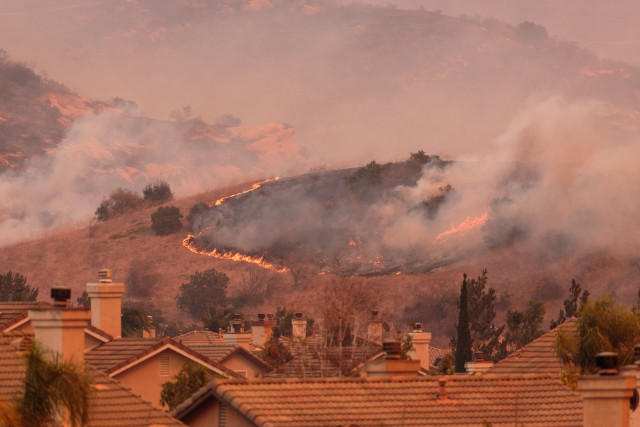
Pandemic and Apocalyptic Skies - 2020 in the Bay Area
I started out this past summer closely monitoring pandemic metrics. Although I am pleased to see recent improvements that have allowed bay area counties to move from Level 1 (widespread) to Level 2 (substantial) and even Level 3 (moderate) for San Francisco County, there has been no time to celebrate. Wildfire season started early and ferociously.
According to CAL Fire’s website, as of October 4, over 4 million acres have burned. That is more than 20 times higher than the acres burned in 2019 for the same time period. Five of the top twenty largest wildfires in California have occurred in 2020 and wildfire season is not yet over. Although I’m very lucky to be safe from the fires, there are reminders of the devastation with the dark skies and the falling ash. Checking both the air quality index and pandemic metrics has become my daily habit.
What’s causing it?
In a normal year, nearly 95 percent of California wildfires are started by people. This year, however, thousands of dry lightning strikes in Northern California sparked four of the five largest wildfires in modern history. This weather event was unlike any seen in decades.1
One example of a fire caused by people is the use of a pyrotechnic device during a gender reveal party which burned more than 10,000 acres in southern California. That Eldorado fire is responsible for six damaged structures, 10 destroyed structures, 13 injuries and one fatality, so far.2 Poorly maintained electrical equipment has also been responsible for wildfires.
Some other causes include:
- Hotter summers and dryer winters – August was California’s hottest August on record. Hot summers and dry winters cause trees and shrubs to become tinder.
- Fire suppression – Fires are a natural and essential part of the California ecosystem yet they have been suppressed for many years to reduce pollution. Although reducing air pollution is important, it has allowed more brush to grow making fuel for the fires. A recent hike, I took in Big Trees State Park showed how resilient redwoods are. Those large trees have healthy green growth on top but with large burn scars near the ground. How much immunity a wildfire gives to an area depends on type of vegetation, intensity and behavior of the fire and overall climate conditions.3
- Housing development – It is expensive to live in California and many people keep moving closer to wilderness for affordability. Others value the lifestyle. Approximately 11.3 Californians live in the wildland urban interface (WUI) and more than 2.7 million live in very high fire hazard severity zones.
Laura’s photo of scorch-marked trees in Big Trees State Park in California.
What can we do?
The National Association of Insurance Commissioners (NAIC) and the Catastrophe Insurance Working Group of the Property and Casualty Insurance Committee are increasing efforts to tackle the effects and provide solutions of natural catastrophes such as wildfires. Additionally, NAIC members have taken an active role in educating Congress and providing technical feedback on various proposals regarding natural catastrophes. Effectively managing a natural disaster response such as a wildfire is one of the main issues regularly discussed between NAIC members and members of Congress.4 The NAIC also provides steps to help homeowners mitigate their risk by (1) creating defensible space; (2) using noncombustible materials; and (3) clearing debris.5 (Seeing goats clearing debris on Bay Area hills is a common site.)
For those who have suffered a loss, California Governor Gavin Newsom recently signed two bills to help future wildfire survivors recover faster. Senate Bill 872, authored by State of California Senator Bill Dodd, removes barriers for future disaster survivors to get critical insurance benefits and streamlines wildfire recovery processes for homeowners who suffer from a loss. The new law will allow for an extension of Additional Living Expenses (ALE) benefits and require an advance payment for no less than four months of ALE without an itemized inventory form, among other consumer protections.
Assembly Bill (AB) 2756, authored by California Assembly members Monique Limón and Richard Bloom, provides additional insurance for disaster survivors to rebuild. The bill will require more transparency and a signed acknowledgement when a new policy is sold that does not cover losses from fire. In addition, AB 2756 reduces the burden on disaster survivors when they rebuild their home by requiring fire policies to include a minimum of 10% of primary dwelling limits (“Coverage A”) as an additional amount available for replacement costs of the policyholder’s structure at the time of loss to help consumers comply with applicable building codes.6
California Department of Insurance Commissioner Ricardo Lara has asked insurance companies to cover wildfire property losses without requiring a home inventory. Many insurance companies have already agreed to an initial advanced payment for personal property of at least 25% of contents coverage without an inventory.7
Insurance companies can make the claim process easier for victims of wildfires but should also provide guidance to homeowners on how to protect their homes.
The pandemic conditions have thankfully improved in California and we are all hoping for the pandemic to ease across the country soon. But unlike the pandemic, wildfires are most certainly not going away. Regulators, insurers, fire protection agencies and others must work together to lessen the devastation.
- “What Made This a Record Fire Season? It Started With Lightening," New York Times, October 2, 2020.
- CalFire Incidents Report as of September 27, 2020.
- “Why burned areas still vulnerable,” San Francisco Chronicle, October 1, 2020.
- https://content.naic.org/cipr_topics/topic_wildfires.htm
- https://content.naic.org/article/consumer_insight_protect_your_home_wildfires_take_these_steps_mitigate_your_risk.htm
- California Department of Insurance Press Release dated October 1, 2020
- California Department of Insurance Press Release dated October 2, 2020



